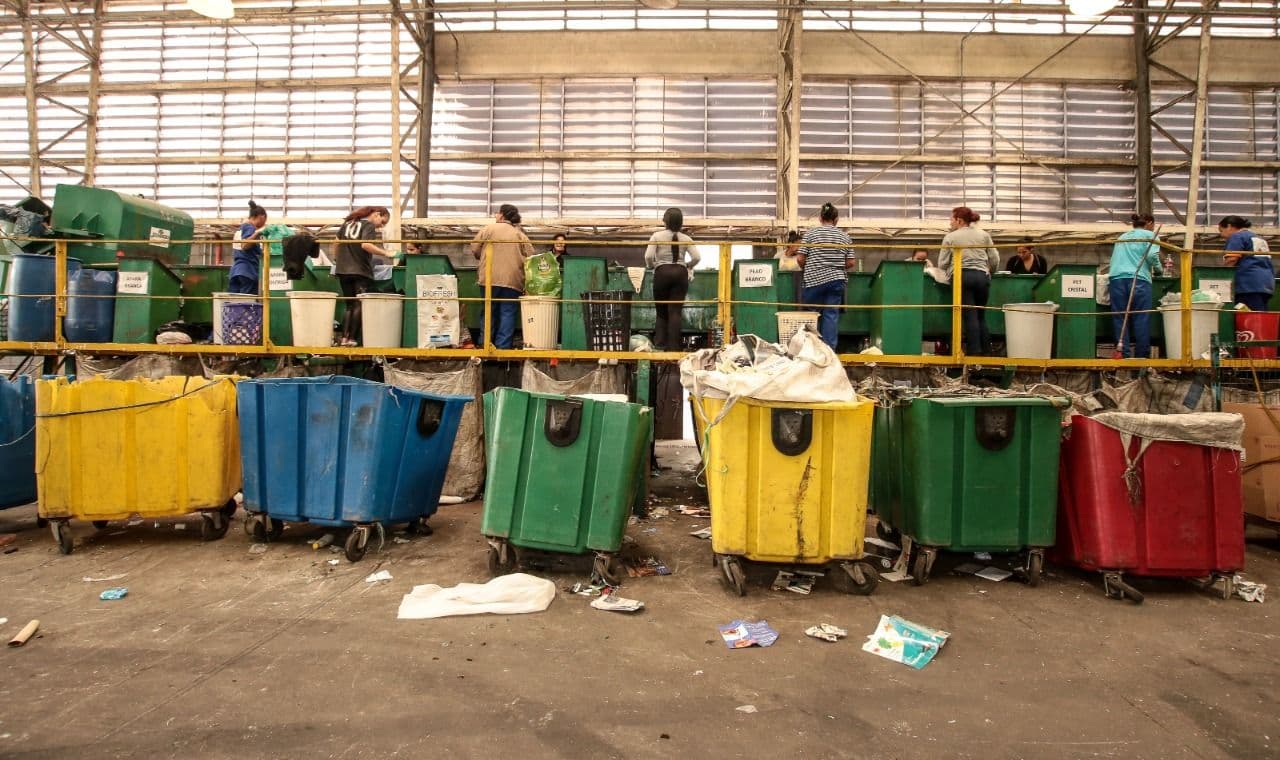
08/06/2023
What does it take for the plastic to be circular?
Commitment and investment are two keywords when we think of a Circular Economy for plastic
By Arlene Carvalho, of the Movimento Circular
Have you ever stopped and wondered that many things that are part of modern life take up plastic in their composition? Mobile phones, packaging, hospital supplies, cars, among many others. This is because the material is versatile; durable; easy to carry; capable of replacing metals, glass and wood in different sectors and applications.
In 2021, the United Nations (UN), informed in report that more than 400 million tons of plastic are produced each year worldwide. But in a linear economy, almost all of this material, regardless of whether its origin is biodegradable or not, at some point becomes trash or waste. The matter is so important that solutions to fight plastic pollution are the main topic of the UN World Environment Day.
Already in May of this year, a new study, also from the UN, brought a new perspective. The report entitled "Shutting off the faucet: How the world can end plastic pollution and create a circular economy”, states that plastic pollution can be reduced by 80% by 2040. That is, if countries, people and companies make deep changes in policies, behaviors and the market.
The publication emphasizes the need for a global agreement that involves all areas of production and consumption and describes how necessary changes to end plastic pollution and create a circular economy could be carried out. Initially, the document suggests the elimination of some plastics and practices, also at all scales, of reuse, recycling and product reorientation or diversification.
 If disposed of incorrectly, plastic can end up in landfills. Image: Freepic
If disposed of incorrectly, plastic can end up in landfills. Image: Freepic
So how can we talk about a circular plastic economy, avoiding the incorrect disposal and such loss of a material that offers us so many possibilities of use?
Still according to the UN, it takes commitment and investment for this circular economy of plastic to be viable. And it needs to be the principle of all the links in the chain of any material – which include industry, commerce, consumers, recycling cooperatives, a broad ecosystem of innovation to create new uses for the materials, among others.
THINKING ABOUT THAT…
What if someone is already concerned about these issues today? What if someone was already thinking and doing something about this plastic chain of circularity? If someone was already thinking about the origin, the use, the designer, the return of this residue to the industry after use?
The good news is that yes, there are already people, companies and institutions thinking about it. And these are not a handful. One of these initiatives is the Plastic Circularity Network, existing in Brazil. Since 2018, the network gathers all the parts that make up this chain to discuss and develop the Circular Economy. The Brazilian Plastic Industry Association (Abiplast) has been carrying out this work since 2018. The action is the first of its kind in Brazil and brings together 66 companies. Its purpose is quite simple: for the plastic to circulate.
One of the companies that make up this network, present in the first link (which includes the petrochemical, chemical, additives and distributors industry), is Dow – a manufacturer of plastic resins, used by its customers in various applications, such as packaging, infrastructure, mobility, among others. The organization, also, is very concerned with ensuring such plastic circularity.
 The plastic resin called PCR is the resin recycled after consumer use. One of DOW's concerns. Image: Dow
The plastic resin called PCR is the resin recycled after consumer use. One of DOW's concerns. Image: Dow
For the chemical engineer and new markets development manager at Dow, Letícia Vanzetto, it is possible to deliver a circular and low-carbon future, on what the waste can come back the chain keeping materials in their highest-value use for as long as possible.
“Much investment is needed in research and development, in addition to working systematically and collaboratively with the clear objective of finding the best solutions in all processes of the value chain so that, in fact, the plastic cycle, or any other material, can be closed, without waste”, he says.
For Vanzetto, the Plastic Circularity Network has a very unique configuration, as it connects all links in the resource chain - from the resin production, packaging, consumer goods companies, retailers, waste managers, cooperatives, recycling companies, and back to industry. “We continue to believe that the collaboration of all these sectors, in addition to public authorities, is essential for any progress towards a Circular Economy”, she explains.
Some points that are already being discussed in this network are, according to the Dow manager: the analysis of the recyclability of plastic packaging, the regulation involving post-consumer resins, the drafting of projects that evaluate how to stimulate municipal recycling and, as just as important as the other topics, mechanisms to encourage recycling that can be incorporated by the government - an NCM* (Mercosur Common Nomenclature) for recycled plastic, for example, as well as tax incentives to avoid double taxation of plastic waste. “These common topics have contributed to the advancement of circularity in the Network”.
*NCM - means Mercosur Common Nomenclature and is an eight-digit code used to identify the nature of products sold in Brazil and other Mercosur countries. This even influences the issue of taxation of products.
EMPLOYMENT AND INCOME GENERATION AND REVERSE LOGISTICS
Stimulating the circularity of plastic is also collaborating with the generation of income and the increase in the number of jobs. According to one survey by Abiplast, released in 2022, and which analyzes data for 2021, together, the plastic transformation and recycling industries account for almost 360,000 jobs in Brazil. With that, the sector would be among the 10 sectors that employ the most within this industrial niche.
In 2022, the Brazilian government undertook, during a meeting of the UN Intergovernmental Negotiating Committee, held in Uruguay, to recover, by 2040, 50% of all plastic packaging generated, avoiding disposal in the environment and recycling is an important process in achieving this goal.
For Professor Edson Grandisoli, Circular Movement Pedagogical Coordinator, recycling is currently the main way to reuse plastic material, but that alone is not enough. “There needs to be a concern on the part of companies and the entire chain, including consumers, to work with reverse logistics - that is, it is not just producing the product and selling it. It is necessary to be fully responsible for post-consumption. This residue must go back to the industry instead of ending up in the environment or landfills”, emphasizes the professor.
 Recycling is one of the reverse logistics tools. Image: Freepic
Recycling is one of the reverse logistics tools. Image: Freepic
Reverse logistics is a Circular Economy mechanism that makes it possible for solid waste produced by consumers to return to industry or the business sector. Then, steps are followed so that that waste is always reused, either in the same cycle or in other production processes or has an environmentally appropriate final destination. According to Abrelpe, in 2022, 306 thousand tons of solid waste were recovered thanks to reverse logistics. Of those, about 23% were plastics.
What is the circular economy?
The Circular Economy proposes a new look at our way of producing, consuming, and disposing, in order to optimize the planet's resources and generate less and less waste. In other words, an alternative model to the Linear Economy - to extract, produce, use and discard - which has proved to be increasingly unsustainable throughout history. In the Circular Economy, the goal is to keep materials in circulation longer by reusing them until nothing becomes waste! For this model to become a reality, we all have a role to play. It is a true collaborative circle, which feeds itself, and helps to regenerate the planet and our relations.
Learn about Circular Economy
If you are interested in learning more about this topic, visit Circular Academy, the first free Latin American course on circular economy aimed at general audiences. All of us, in partnership and collaboration, can make a difference in building a more circular planet.

